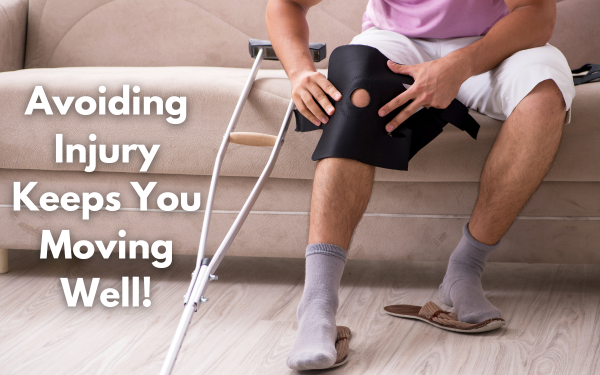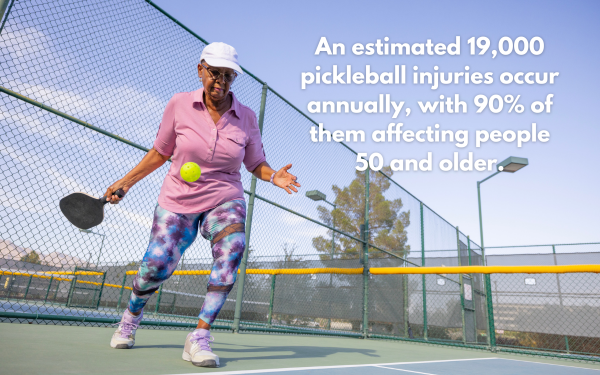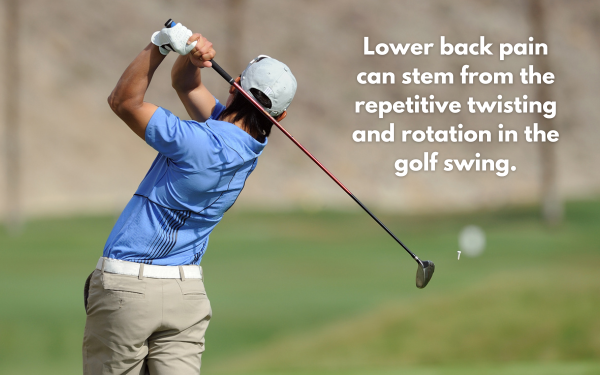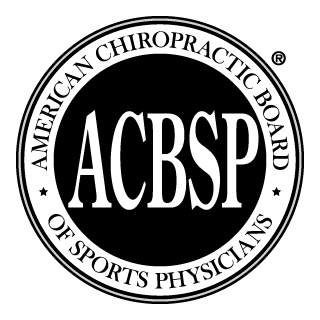Pickleball, Tennis, and Golf: Prevention Tips for Common Injuries

Here in the sunshine state (especially, it seems, in Naples, Bonita Springs, Estero, and Fort Myers), we love our sports! In terms of popularity, football, basketball, baseball, soccer, and hockey are among the top favorite spectator sports, while golf, tennis, and pickleball tend to be the recreational sports many older, active adult Floridians participate in regularly.
As most vibrant, healthy adults will concur, physical activity yields strength, power, agility, and mobility when included in everyday life. On the other hand, the more physically active you are, the more you increase the risk of physical injury.
While physical injuries among active adults who play pickleball, tennis, and golf are not imminent, they are hardly uncommon.
- As reported by GolfSupport.com, nearly 7 in 10 amateur golfers and 9 in 10 professional golfers will suffer a golf-related injury at least once in a lifetime.
- According to an article by the Insurance Information Institute, Inc., 20,693 racquet sport-related injuries (including tennis) were reported in the United States in 2021, with adult injuries in people aged 25 to 65+ accounting for a whopping 14,366 of those noted injuries.
- Regarding pickleball injuries, as noted in a Journal of Emergency Medicine report, an estimated 19,000 pickleball injuries occur annually, with 90% of them affecting people 50 and older.
Yes, we strongly encourage physical activity and participation in the Florida sports you love! But we also invite you to proactively engage in safety measures so you continue to move well and not contribute to the injury statistics related to playing pickleball, tennis, and golf!
Let’s consider ways to help fend off injury when participating in these popular sports:
PICKLEBALL
Pickleball, a fast-paced and highly addictive sport, has been gaining popularity across all age groups. While it is a fun and exciting game, like any physical activity, there is always a risk of injuries. Understanding the common pickleball injuries and taking preventative measures can help players stay on the court and enjoy the game to the fullest.
One of the most frequent injuries in pickleball is sprained ankles. As the game involves quick lateral movements and changes in direction, the risk of rolling or twisting an ankle is high. Players should invest in proper footwear that provides ankle support and good traction on the court to prevent this. Additionally, warming up before a game and performing ankle-strengthening exercises can help improve stability and reduce the chances of an injury.
Another common injury in pickleball is shoulder strain or rotator cuff injuries. The repetitive overhead swings and powerful shots can stress the shoulder joint significantly. Practicing proper technique and avoiding overexertion is crucial to prevent pickleball-induced shoulder injuries. Pickleball players should strengthen their shoulder muscles through targeted exercises and maintain good posture during the game. Regular stretching and warming up the shoulder muscles before playing can also help reduce the risk of strain.
Pickleball players often experience knee pain or tendonitis due to the quick stops, starts, and pivots involved in the game. Knee pads or braces can provide additional support and cushioning to the knees. Engaging in exercises that target the quadriceps and hamstrings and maintaining a healthy weight can also help protect the knees from injury.
TENNIS
One of the most prevalent injuries in tennis is lateral epicondylitis, commonly called “tennis elbow.” Lateral epicondylitis occurs when the tendons outside the elbow become inflamed due to repetitive motions, such as racket swinging. Tennis elbow can cause pain and tenderness on the outer side of the elbow, making it difficult to grip the racquet and perform regular activities.
Another common tennis injury is shoulder impingement, often affecting players who constantly raise their arms overhead to serve or hit powerful shots. Shoulder impingement happens when the tendons and muscles around the shoulder joint become pinched or irritated, leading to pain, weakness, and a limited range of motion. Proper warm-up exercises, stretching, and practicing correct techniques can help prevent this injury.
 Sprained ankles are also frequent among tennis players. The constant movement, abrupt changes in direction, and uneven court surfaces stress the ankles, making them susceptible to rolling or twisting. Ankle sprains can range from mild to severe, causing pain, swelling, and instability. Wearing supportive footwear, performing ankle-strengthening exercises, and being cautious during lateral movements can reduce the risk of sprains.
Sprained ankles are also frequent among tennis players. The constant movement, abrupt changes in direction, and uneven court surfaces stress the ankles, making them susceptible to rolling or twisting. Ankle sprains can range from mild to severe, causing pain, swelling, and instability. Wearing supportive footwear, performing ankle-strengthening exercises, and being cautious during lateral movements can reduce the risk of sprains.
In addition to these injuries, other common tennis-related ailments include knee tendonitis, stress fractures, and lower back pain. It’s crucial to listen to your body, pay attention to any signs of discomfort, and seek medical attention if needed. Engaging in proper warm-up and cool-down routines, using appropriate protective gear, and gradually increasing the intensity and duration of play can all contribute to injury prevention.
GOLF
Golf, a sport known for its elegance and precision, may seem relatively low-impact compared to other athletic endeavors. However, like any physical activity, it carries injury risks, so becoming mindful of common injuries and implementing preventive measures is essential for both avid golfers and beginners alike.
One of the most prevalent golf injuries is medial epicondylitis, commonly called “golfer’s elbow,” which causes pain and inflammation on the inside of the elbow, resulting from repetitive swinging motions. To prevent golfer’s elbow, you should always warm up before playing, incorporating stretching exercises for the wrists, forearms, and shoulders. Proper grip techniques and avoiding excessive force during swings can also help reduce the risk.
 Another common injury is lower back pain, which can stem from the repetitive twisting and rotation in the golf swing. Strengthening the core muscles and maintaining proper posture is vital for preventing lower back pain. Regular exercises targeting the abdomen, back, and hips, such as planks and bridges, can enhance stability and reduce strain on the lower back.
Another common injury is lower back pain, which can stem from the repetitive twisting and rotation in the golf swing. Strengthening the core muscles and maintaining proper posture is vital for preventing lower back pain. Regular exercises targeting the abdomen, back, and hips, such as planks and bridges, can enhance stability and reduce strain on the lower back.
Shoulder injuries, such as rotator cuff strains or tears, can occur due to the powerful and repetitive nature of the golf swing. To protect the shoulders, golfers should focus on maintaining good shoulder mobility and strengthening the muscles surrounding the joint. Exercises such as shoulder rotations, external rotations with resistance bands, and dumbbell lateral raises can help strengthen shoulder muscles to prevent injuries.
Lastly, wrist and hand injuries, such as tendonitis or carpal tunnel syndrome, are common in golfers. These injuries can result from improper swing mechanics or overuse. Wearing supportive wrist braces and ensuring proper grip technique can help reduce stress on the wrists and hands. Taking breaks between rounds and practicing adequate rest and recovery can also reduce the risk of golf injuries.
SUMMARY
Whether you’re a golf, tennis, or pickleball enthusiast, listening to your body and taking breaks when needed is essential, as pushing through fatigue or ignoring warning signs of pain can lead to severe injuries. As hard as it might be to stay on the sidelines temporarily, rest and recovery are essential in injury prevention, allowing the body to heal and strengthen.
If you become injured while playing your favorite sport, the first thing to do is introduce ice to the injured area, not heat. Apply ice for 20-30 minutes, take a break from the ice for one hour, and then repeat.
 Remember, golf, tennis, and pickleball injuries can vary in severity and recovery time. If you experience persistent pain or suspect significant damage, it’s important to consult a healthcare professional with specific training in sports medicine. Dr. Vivian Ebert of LivingWell Chiropractic specializes in chiropractic sports medicine and carries a Certified Chiropractic Sports Physicians® Certification from the American Chiropractic Board of Sports Physicians® (ACBSP).
Remember, golf, tennis, and pickleball injuries can vary in severity and recovery time. If you experience persistent pain or suspect significant damage, it’s important to consult a healthcare professional with specific training in sports medicine. Dr. Vivian Ebert of LivingWell Chiropractic specializes in chiropractic sports medicine and carries a Certified Chiropractic Sports Physicians® Certification from the American Chiropractic Board of Sports Physicians® (ACBSP).
When you're searching for a "chiropractor near me," you can feel confident directing all you’re your chiropractic care-related questions to Dr. Vivian Ebert of LivingWell Chiropractic in Bonita Springs, FL, located in The Brooks Town Center at the northwest corner of Three Oaks Parkway and Coconut Road.
LivingWell Chiropractic provides state-of-the-art chiropractic care, spinal decompression, medical massage, and nutritional guidance with a holistic wellness approach focused on pain relief for patients with musculoskeletal conditions. Centrally located in Bonita Springs, the office is convenient for patients from Naples, Bonita Springs, Estero, and South Fort Myers.
Posted In:
Move Well Articles
